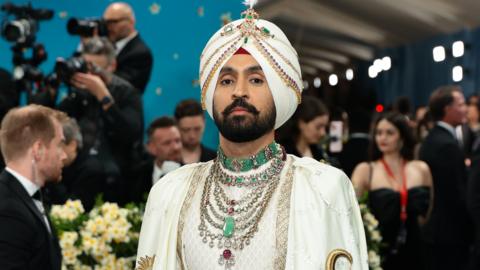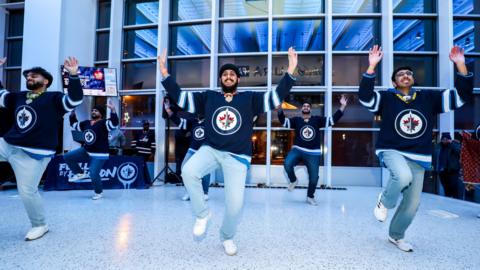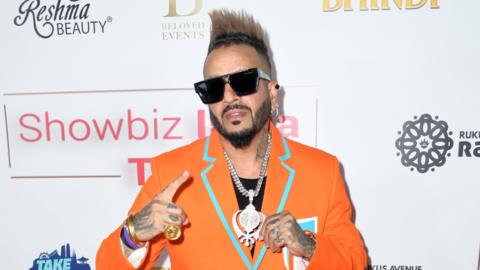Indian singer Diljit Dosanjh's Met Gala debut last month left a lasting impression on global fashion.
The 41-year-old singer, who is the only Punjabi musician to perform at Coachella, walked the red carpet dressed like an early 20th Century maharajah.
His opulent ivory and gold ensemble - created by designer Prabal Gurung - complete with a feathered bejewelled turban, trended in India for weeks.
He also wore a gorgeous diamond necklace, its design inspired by a Cartier piece worn by an erstwhile king of the northern Indian state of Punjab.
A Panthère de Cartier watch, a lion-headed and a jewel-studded sword completed the ensemble, which had a map of Dosanjh's home state embroidered on the back of the cape along with letters from Gurmukhi, the script for Punjabi language.
Of course, Dosanjh is no stranger to such style.
Just like his music, he's carved out a niche in fashion too - a hip hop singer who is known for melding traditional Punjabi styles with Western influences.
Often seen in anti-fit trousers, chunky sneakers, and stacks of necklaces that he matches with his colourful turbans, his unique form of self-expression has captured the imagination of millions, leading to interesting reinventions in the traditional Punjabi attire.
The changes can be felt everywhere. A 16-minute high-intensity bhangra competition in California would be impossible without high performance sneakers. And basement bhangra nights in Berlin are enjoyed in crop tops and deconstructed pants.
Punjabi music itself, high on volume and energy - with lyrics packed with the names of cities and global luxury brands - has become a subculture.


